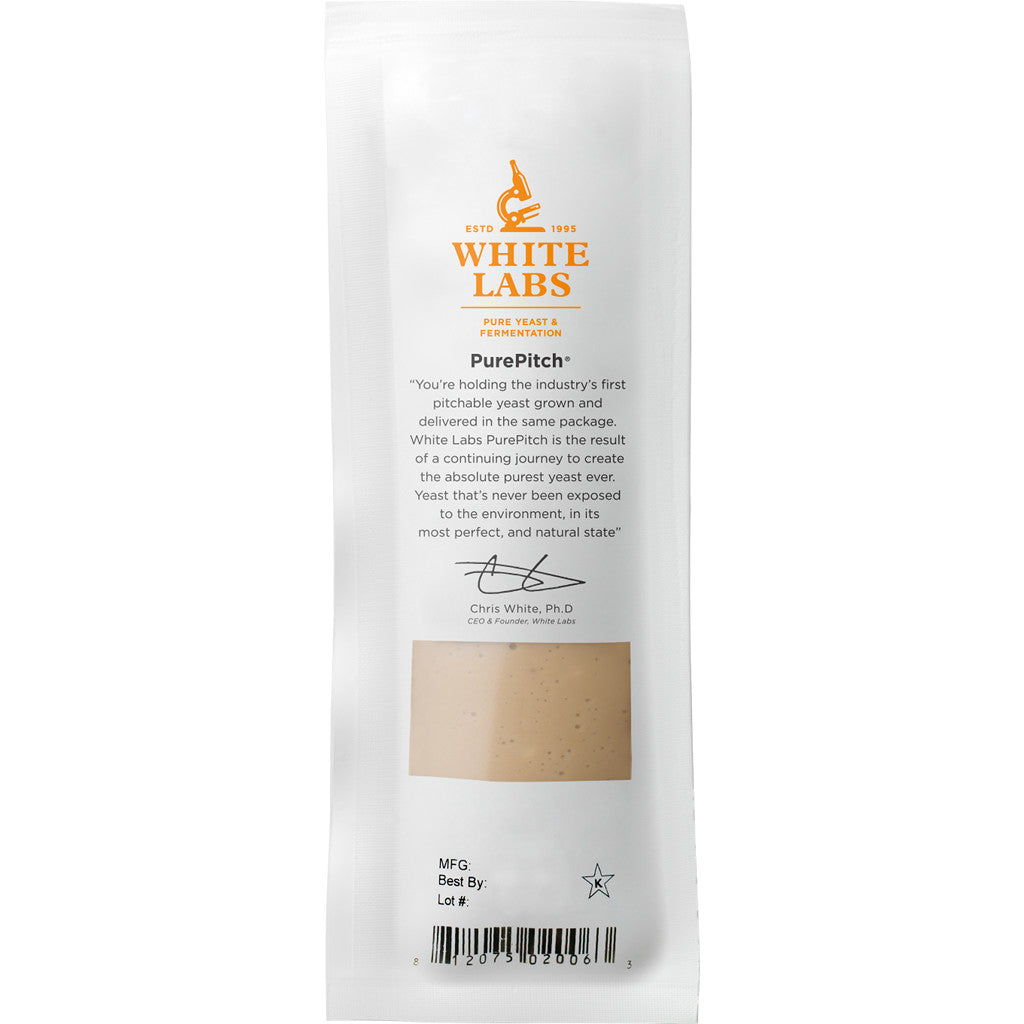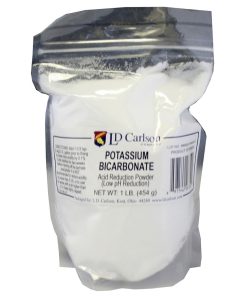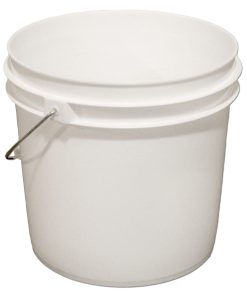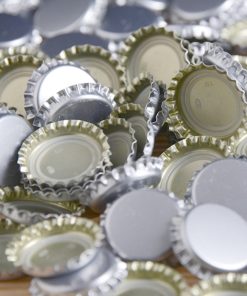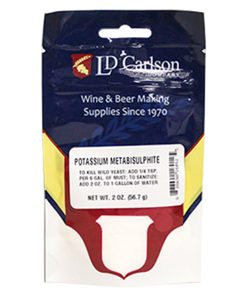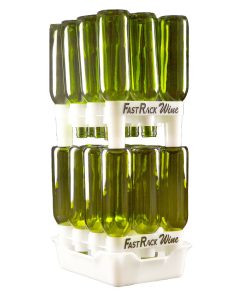White Labs English Ale Yeast WLP002 White Labs
$ 8,99 $ 5,39
- Description
- Details
- Directions
-
White Labs English Ale Yeast WLP002 is a classic ESB strain from one of England’s largest independent breweries. While it is traditionally used for English-style ales including Milds, Bitters, Porters and Stouts, it is also ideal for American-style Pale Ales and IPAs. Residual sweetness accentuates the malt character and mild fruity esters add complexity to the flavor and aroma of the finished beer. Due to this strain’s high flocculation, the beer will finish clear and the yeast can easily be harvested from the fermenter for future use. Slight diacetyl production is normal and it is common for the yeast to have a coagulated appearance.
-
Yeast Strain: English Ale (WLP002) Attenuation: 63 – 70% Flocculation: Very High Alcohol Tolerance: Medium (5 – 10%) Optimum Fermentation Temperature: 65°F – 68°F Cell Count: Over 100 billion cells Net Volume: 1.18 fl oz (35mL) -
YEAST CULTURING:
Each vial of White Labs liquid yeast is designed to be used directly in 5 gallons, hence the term ‘pitchable yeast’. Each vial is equivalent in cell count to a pint starter, or 75-150 billion cells. One vial will usually start fermentation in 5 gallons in 5-15 hours at 70°F. If a faster start is desired, or if initial gravity is over 1.070, we recommend a 1-2 pint starter be made. If a starter is made from a fresh vial, one vial can be added directly to a 2 liter starter, which in 2 days will grow to approximately 240 billion cells, to achieve a pitching rate in 5 gallons of of 1 million cells per 1mL per 1° Plato (with a 12° Plato beer).DIRECTIONS:
Store in refrigerator until use, do not freeze. Remove 2 hours prior to addition and let warm to room temperature (~70°F). This makes re-suspension in the vial easier, and prevents a temperature shock when added to wort. Remove the shrink wrap on cap, shake the vial well to re-suspend yeast, and open cap carefully. Pour into fresh, aerated wort (by shaking fermentor for 15 minutes or injection though an aeration stone) at 70-75°F. The first sign of fermentation will be a raised airlock, then wisps of foam will start to cover the top of the wort. A full, thick krausen will be evident 1-2 hours after this. Be careful to leave enough head space in the fermentor, or use a blow off tube because some fermentations will be very active, and it is not unusual for a 5 gallon fermentation to blow the airlock off a 6.5 gallon fermentor! When fermentation activity subsides, check the gravity. If fermentation is complete, bottle the beer or transfer the fermentor to 40°F for 1 week to cold condition. Bottling or transfer to cold should take place 14 to 30 days after brewing.
Fast Shipping and Professional Packing
We have a range of shipping options thanks to our long-term partnership with UPS FedEx DHL. Our warehouse personnel will pack each item according to our strict specifications. The goods you send us are checked thoroughly and securely secured prior to shipment. Every day, we send thousands of packages to customers across many countries. This is a sign of our commitment to be the largest online retailer globally. Both Europe as well as the USA have distribution and warehouse centers.
Please note that orders with more than one item will be given a processing time according to the item.
Prior to shipment, we will examine thoroughly the items you've purchased. Most orders are shipped within 48 hours. The delivery time should be between 3-7 days.
Returns
Due to multiple entities which include the factory as well as the warehouse, we cannot fully manage stock. So the actual stock may change at any time. Be aware that it's possible that your order could run out of stock even after you've placed your order.
Our policy runs for 30 days. If you have passed 30 days without a trace since the purchase, unfortunately we can't offer an exchange or refund.
In order to be eligible for a refund, your item must be unused and in the same condition as you received it. It should also be returned in the original packaging.
Related products
Liquid Yeast
Liquid Yeast
Liquid Yeast
Wine Making Ingredient Kits
Liquid Yeast
Wine Bottle Labels
Wine Bottle Labels
Gewurztraminer Adhesive Wine Bottle Labels – 30-Pack LD Carlson
Wine Bottle Labels
Sauvignon Blanc Adhesive Wine Bottle Labels – 30-Pack LD Carlson
Liquid Yeast
Wine Making Ingredient Kits
WinExpert Classic California Gewürztraminer Wine Kit, 8L Vintner’s Reserve
Wine Making Chemicals
Mother of Vinegar Cultures
Supreme Mother of Vinegar Culture, 8oz Supreme Mother of Vinegar
Liquid Yeast
Fermenting Buckets
Tubing Clamps
Wine Bottle Labels
Simply White Adhesive Wine Bottle Labels – 30-Pack LD Carlson
Finings and Clarifiers
Wall Mount Bottle Opener Sets
White Powder Coated Wall Mount Bottle Opener and Cap Catcher Set Starr ‘X’
Wall Mount Bottle Openers
Wine Making Ingredient Kits
Vintner’s Reserve Sauvignon Blanc Wine Kit, 10L Vintner’s Reserve
Liquid Yeast
Liquid Yeast
Wine Bottle Labels
Wine Making Chemicals
Liquid Yeast
